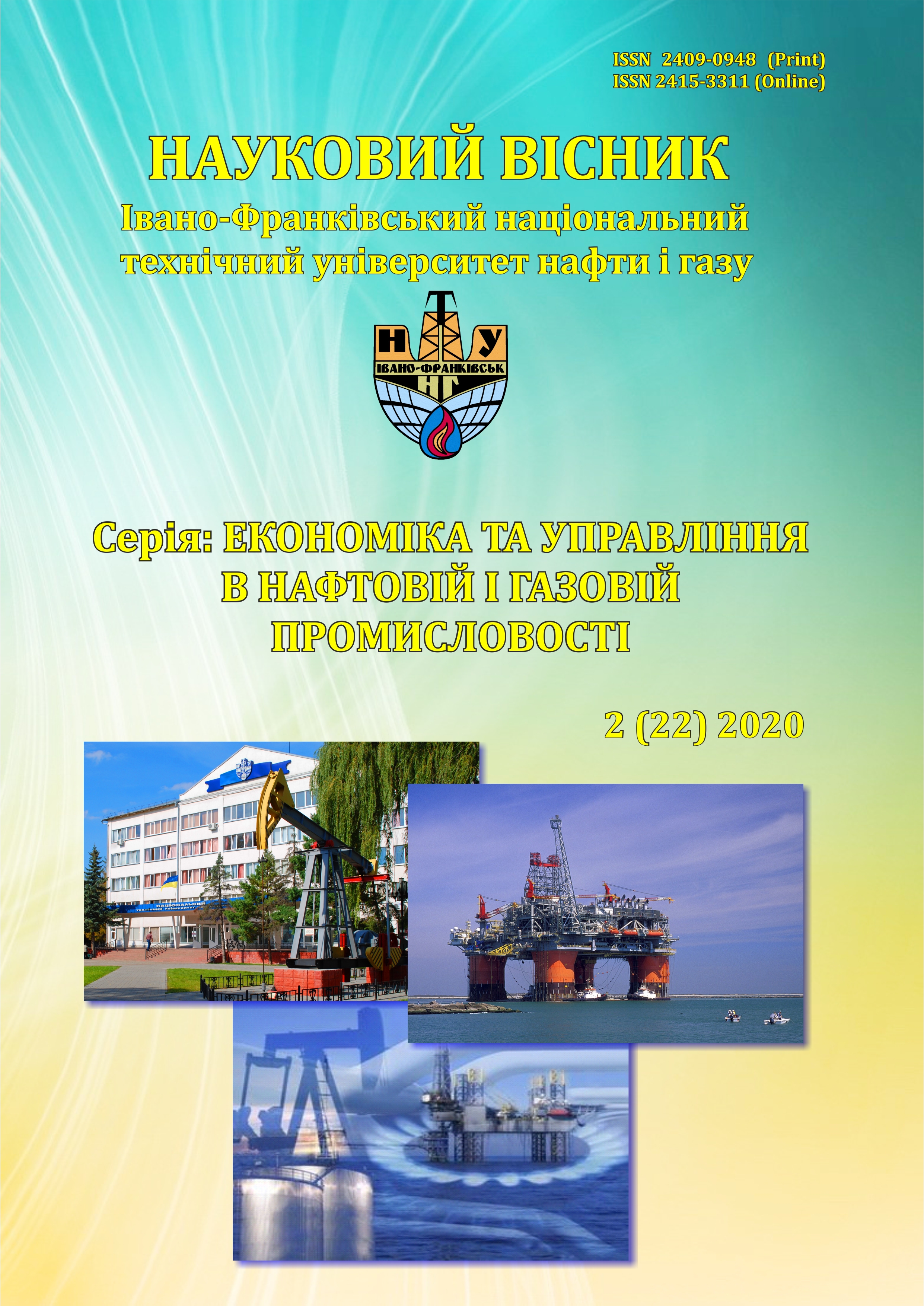ОСОБЛИВОСТІ ФОРМУВАННЯ КОНКУРЕНТНИХ ПЕРЕВАГ ПІДПРИЄМСТВ НА СТАДІЯХ ЖИТТЄВОГО ЦИКЛУ
DOI:
https://doi.org/10.31471/2409-0948-2020-2(22)-32-40Keywords:
competitive advantages, stage, partnership, coopetition, strategyAbstract
The article investigates the patterns of enterprises competitive advantages transformation, taking into account the dynamics of the life cycle stages. The issues are considered of competitive advantages formation from the standpoint of market, resource and behavioral approaches is developed. Competition is seen not only as a classic confrontation of individual actors, but as the formation of prerequisites for effective interaction in the market, weakening the antagonistic component of competition and finding ways to establish effective partnerships for further cooperation.
This paper analyzes the theoretical contribution to the formation and development of the competition theory and competitive advantages and concludes that under the influence of globalization such types of partnerships as cooperation, coopetition and consolidation are becoming widespread. There are two main ways to strengthen the enterprises competitive advantages, namely: rely on their capabilities or create new partnerships. Emphasis is placed on actualizing the behavioral and strategic relationship value. If the former is based on trust and confidence, then the strategic value implies the provision of strategic advantages, focusing on the development of key competencies, rational allocation of resources and obtaining a synergistic result in the future.
The present study analyzes the approaches to the classification of the enterprise life cycle stages. The main emphasis is placed on the formation of enterprise development strategy and detailing competitive advantages in each of its activity periods. The relationship between the life cycle stages, the goals and objectives of the organization, possible development strategies and the corresponding competitive advantages is illustrated. It is concluded that the company at any life cycle stage can create and provide certain competitive advantages implementing a strategy. Only the successful selection and implementation of the appropriate strategy can guarantee the desired quantity and quality of these benefits, the duration of their preservation and efficiency. At the same time, it is important that these advantages are not aimed at "fighting" with competitors, but at the possibility of forming new partnership structures taking into account common interests.
References
Bondarenko S. M., Lisovskyi M. Yu. (2017). Konkurentni perevahy – unikalni osoblyvosti suchasnykh pidpryiemstv. Naukovyi visnyk Uzhhorodskoho natsionalnoho universytetu. Seriia: Mizhnarodni ekonomichni vidnosyny ta svitove hospodarstvo – Uzhorod National University Herald. International Economic Relations And World Economy, issue 15, part 1, 42-45 [in Ukrainian].
Melikhov A. A. (2013). Konkurentni perevahy yak chynnyk zabezpechennia konkurentospromozhnosti pidpryiemstv. Teoretychni i praktychni aspekty ekonomiky ta intelektualnoi vlasnosti – Theoretical and Practical Aspects of Economics and Intellectual Property, issue 1(3), 168-172. DOI: https://doi.org/10.31498/2225-6407.1.2013.21886 [in Ukrainian].
Kharchuk T. V. (2018). Resursnyi pidkhid v ekonomichnomu upravlinni konkurentnym potentsialom mashynobudivnykh pidpryiemstv. Naukovyi visnyk Uzhhorodskoho natsionalnoho universytetu. Seriia: Mizhnarodni ekonomichni vidnosyny ta svitove hospodarstvo – Uzhorod National University Herald. International Economic Relations And World Economy, issue 22, part 3, 88-92 [in Ukrainian].
Butenko N. V., Bohuslavskyi O. V. (2018). Transformatsiia konkurentnykh vidnosyn v umovakh hlobalizatsii. Biznes Inform – Business Inform, № 12, 32-38 [in Ukrainian].
Cherchata, A. O. (2016). Koncepcії upravlіnnja pіdpriemstvami u kontekstі zastosuvannja logіstichnogo pіdhodu. Ekonomichna strategiya i perspekty`vy` rozvy`tku sfery` torgivli ta poslug. Xarkiv. XDUXT. 2016. Issue 2 (24). S. 87 – 96. [in Ukrainian].
Cherchata, A. O. (2011). Vprovadzhennia kompleksnoho pidkhodu shchodo stratehii postachan na budivelnomu pidpryiemstvi. Visnyk Donetskoho natsionalnoho universytetu ekonomiky i torhivli imeni Mykhaila Tuhan-Baranovskoho, 3 (51), 175–182.
Suchasni formy konkurentnoi vzaiemodii subiektiv hospodariuvannia. (2019). Zh. V. Poplavskoi (Ed.). Lviv: TOV «Halytska vydavnycha spilka» [in Ukrainian].
Halynska Yu. V. (2017). Vzaiemodiia vydobuvnykh pidpryiemstv Ukrainy v umovakh koopetytsii. Visnyk ONU imeni I.I. Mechnikova – Odessa National University Herald. Economy, issue 7 (60), Vol. 22, 27-30 [in Ukrainian].
Palyvoda O., Temindarova Yu. (2011). Formuvannia stratehichnykh partnerstv u malomu biznesi: problemy ta perspektyvy. Ekonomichnyi analiz – Ekonomichnyy analiz, issue 8, part 1, 144-147 [in Ukrainian].
Kuznetsova I. O., Sokurenko I. A. (2019). Stadii zhyttievoho tsyklu maloho pidpryiemstva: kharakterystyka ta spetsyfika pryiniattia upravlinskykh rishen. Visnyk sotsialno-ekonomichnykh doslidzhen Odeskyi natsionalnyi ekonomichnyi universytet – Socio-Economic Research Bulletin of Odessa National Economic University, № 1 (69), 179-188 [in Ukrainian].
Romashova Ya. V. (2016). Kryza na riznykh stadiiakh zhyttievoho tsyklu pidpryiemstva: prychyny ta napriamy reahuvannia. Investytsii: praktyka ta dosvid – Investytsiyi: praktyka ta dosvid, № 4, 45-49 [in Ukrainian].
Popadynets, I., Andrusiv, U., Shtohryn, M & Galtsova, O. (2020). The effect of cooperation between universities and stakeholders: Evidence from Ukraine.International Journal of Data and Network Science, 4(2), 199-212. doi: 10.5267/j.ijdns.2020.1.001.
Boiarska M. O. (2015). Analiz stratehii rozvytku pidpryiemstva. Hlobalni ta natsionalni problemy ekonomiky – Global and National Problems of Economy, issue 5, 306-310 [in Ukrainian].
Downloads
Published
How to Cite
Issue
Section
License
Copyright and Licensing Terms
Copyright Statement
The authors who publish in the journal accept the following conditions:
- The authors retain the copyright and grant the journal the right of first publication, licensed with Creative CommonsCC BY-NC-SA , which permits other people to remix, transform, and build upon the material and use the material for non-commercial purposes, give appropriate credit and distribute the contributions under the same license as the original.
- The authors can conclude additional agreements on the non-exclusive distribution of the journal’s published version of the work (for example, publication of the work in electronic repositories) with an acknowledgment of its initial publication in this journal.
- The authors can upload the published articles on the Internet (for example, in electronic repositories or on web-sites), as it will stimulate fruitful scholarly discussions and increase the citation rates of the published articles.


1.png)


1.png)





